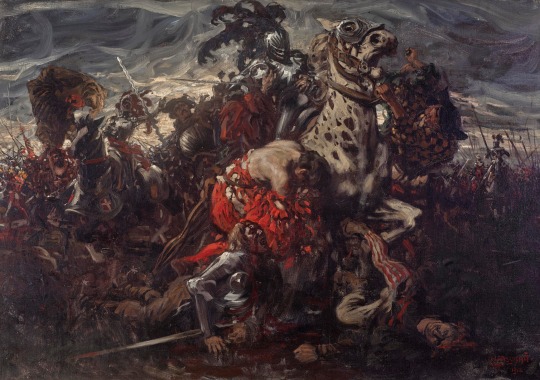#Holy Roman Empire
Photo

What the Holy Roman Empire looked like in 1100 A.D.
442 notes
·
View notes
Text



Fuck the exams
#hetalia#hetalia axis powers#aph germany#ludwig beilschmidt#aph italy#aph north italy#feliciano vargas#aph gerita#gerita#aph#holy roman empire#aph holy roman empire#chibitalia
819 notes
·
View notes
Photo


A pair of elaborate puffed and slashed Arm Harnesses, Germany, ca. 1520, housed at the Musée de l'Armée.
#armor#armour#costume armor#puffed and slashed#europe#european#germany#german#hre#holy roman empire#renaissance#musee de l'armee#art#history
2K notes
·
View notes
Text

Chevalier de Montmorency by Pierre Joubert
#battle of bouvines#montmorency#knight#knights#medieval#middle ages#art#pierre joubert#history#france#europe#heraldry#banners#european#french#bouvines#matthieu ii de montmorency#matthew ii of montmorency#holy roman empire#flanders#angevin empire#battle#war
633 notes
·
View notes
Text

Reference drawing of Juana I of Castile for the Tomb of Maximillian I by Jörg Kölderer (1522)
#peep the little pomegranate🥹#juana i of castile#juana of castile#joanna of castile#juana la loca#maximilian i#art#art history#history of art#drawing#northern renaissance art#northern renaissance#renaissance art#renaissance#renaissance history#16th century art#16th century#sixteenth century#16th century fashion#1500s#history#holy roman empire#holy roman emperor#tomb#early modern#flemish art#Flanders#netherlands#netherlandish art#austrian art
327 notes
·
View notes
Text


Halberd of the Life Guard of Archbishop Wolf Dietrich from Salzburg, Austria dated to 1589 on display at the Salzburg Museum in Salzburg, Austria
Photographs taken by myself 2022
#military history#16th century#renaissance#holy roman empire#hapsburgs#art#austria#austrian#salzburg museum#salzburg#barbucomedie
207 notes
·
View notes
Text

Imperial Orb of the Holy Roman Empire, introduced in 1612
from The Kunsthistorisches Museum, Vienna
925 notes
·
View notes
Text

Patience is virtue?
#hetalia#aph#hetalia axis powers#hws#hetalia world stars#hetalia fanart#meme redraw#chibitalia#aph chibitalia#aph italy#hws italy#aph veneziano#hws veneziano#hetalia italy#hetalia veneziano#holy roman empire#aph holy roman empire#hws holy roman empire#holytalia
169 notes
·
View notes
Text







Códice de Trajes, costumes from the realms of Charles V, Holy Roman Emperor and King of Spain, made in Germany in mid 16th century (1540s-1550s)
Prussia
Prussia and Friesland
Schwabia and Elzach
Juelich
Frisia
Germany
German dance
#germany#manuscript#16th century#mdpillustration#illustration#costume illustration#1540s#1550s#holy roman empire#16th c. holy roman empire#prussia#mid 16th century
409 notes
·
View notes
Text

CODEX AUREUS OF ST. EMMERAM
The illuminated gospel book, made in 870 for the Holy Roman Emperor Charles II. An important example of Carolingian art, it features a handmade relief cover in gold, decorated by sapphires, emeralds, and pearls.







source
#beautiful books#book blog#books books books#book cover#books#old books#holy roman emperor#holy roman empire#incunabula#jeweled#illuminated manuscript#book binding#book design#treasure binding#christian bible#new testament#codex#carolingian
537 notes
·
View notes
Text


Emperor Barbarossa | Jerma985
Died 1090 | Born 1972
Welcome back Friedrich!!
179 notes
·
View notes
Text
The internet is not a (link)dump truck

Monday (October 2), I'll be in Boise to host an event with VE Schwab. On October 7–8, I'm in Milan to keynote Wired Nextfest.

The second decade of the 21st century is truly a bounteous time. My backyard has produced a bumper crop of an invasive species of mosquito that is genuinely innovative: rather than confining itself to biting in the dusk and dawn golden hours, these stinging clouds of flying vampires bite at every hour that God sends:
https://themagnet.substack.com/p/the-magnet-081-war-with-mosquitoes
Here in the twilight of capitalism's planet-devouring, half-century orgy of wanton destruction, there's more news every day than I can possibly write a full blog post about every day, and as with many weeks, I have arrived at Saturday with a substantial backlog of links that didn't fit into the week's "Hey look at this" linkdumps.
Thus, the eighth installment in my ongoing, semiregular series of Saturday linkdumps:
https://pluralistic.net/tag/linkdump/
This week, the miscellany begins with the first hesitant signs of an emerging, post-neoliberal order. The FTC, under direction of the force-of-nature that is Lina Khan, has brought its long-awaited case antitrust case against Amazon. I am very excited about this. Disoriented, even.
When was the last time you greeted every day with a warm feeling because high officials in the US government were working for the betterment of every person in the land? It's enough to make one giddy. Plus, the New York Times let me call Amazon "the apex predator of our platform era"! Now that it's in the "paper of record," it's official:
https://pluralistic.net/ApexPredator
Now, lefties have been predicting capitalism's imminent demise since The Communist Manifesto, but any fule kno that the capitalist word for "crisis" also translates as "opportunity." Like the bedbugs that mutated to thrive in clouds of post-war DDT, capitalism has adapted to each crisis, emerging in a new, more virulent form:
https://boingboing.net/2023/09/30/bedbugs-take-paris.html
But "anything that can't go on forever will eventually stop" (Stein's Law). Perhaps our mistake was in waiting for capitalism to give way to socialism, rather than serving as a transitional phase between feudalism and…feudalism.
What's the difference between feudalism and capitalism? According to Yanis Varoufakis, it comes down to whether we value rents (income you get from owning things) over profits (income you get from doing things):
https://pluralistic.net/2023/09/28/cloudalists/#cloud-capital
By that metric, the FTC's case against Amazon is really a case against feudalism. Through predatory pricing and acquisitions, Amazon has turned itself into a chokepoint that every merchant, writer and publisher has to pass through in order to reach their customers. Amazon charges a fortune to traverse that chokepoint (estimates range from 45% to 51% of gross revenues) and then forces sellers to raise their prices everywhere else when they hike their Amazon prices so they can afford Amazon's tolls. It's "an economy-wide hidden tax":
https://www.thebignewsletter.com/p/the-ftc-sues-to-break-up-amazon-over
Now, feudalism isn't a straightforward proposition. Like, are you sure you mean feudalism? Maybe you mean "manorialism" (they're easy to mix up):
https://locusmag.com/2021/01/cory-doctorow-neofeudalism-and-the-digital-manor/
Plus, much of what we know about the "Dark Ages" comes from grifter doofuses like Voltaire, a man who was capable of dismissing the 800 year Holy Roman Empire with a single quip ("neither holy, roman, nor an empire"). But the reality is a lot more complicated, gnarly and interesting.
That's where medievalist Eleanor Janeaga comes in, and her "Against Voltaire, or, the shortest possible introduction to the Holy Roman Empire" is a banger:
https://going-medieval.com/2023/09/29/against-voltaire-or-the-shortest-possible-introduction-to-the-holy-roman-empire/
Now, while it's true that Enlightenment thinkers gave medieval times a bum rap, it's likewise true that a key element of Enlightenment justice is transparency: justice being done, and being seen to be done. One way to distinguish "modern" justice from "medieval" trials is to ask whether the public is allowed to watch the trial, see the evidence, and understand the conclusion.
Here again, there is evidence that capitalism was a transitional phase between feudalism and feudalism. The Amazon trial has already been poisoned by farcical redactions, in which every key figure is blacked out of the public record:
https://prospect.org/power/2023-09-27-redacted-case-against-amazon/
This is part of a trend. The other gigantic antitrust case underway right now, against Google, has turned into a star chamber as well, with Judge Amit P Mehta largely deferring to Google's frequent demands to close the court and seal the exhibits:
https://usvgoogle.org/trial-update-9-22
Google's rationale for this is darkly hilarious: if the public is allowed to know what's happening in its trial, this will be converted into "clickbait," which is to say, "The public is interested in this case, and if they are informed of the evidence against us, that information will be spread widely because it is so interesting":
https://www.bigtechontrial.com/p/secrecy-is-systemic
Thankfully, this secrecy is struggling to survive the public outrage it prompted. While the court's Zoom feed has been shuttered and while Judge Mehta is still all-too-willing to clear the courtroom during key testimony, at least the DoJ's exhibits aren't being sealed at the same clip as before:
https://www.theverge.com/2023/9/27/23892215/google-search-antitrust-trial-documents-public-again-judge-mehta-rules
In 2023, the world comes at you fast. There's an epic struggle over the future of corporate dominance playing out all around us. I mean, there are French antitrust enforcers kicking down doors of giant tech companies and ransacking their offices for evidence of nefarious anticompetitive plots:
https://www.theverge.com/2023/9/28/23894863/nvidia-offices-raided-french-competition-authority
As ever, the question is "socialism or barbarism." But don't say that too loud: in America, socialism is a slur, one that dates back to the Reconstruction era, when pro-slavery factions called Black voting "socialism in South Carolina."
Ever since, white nationalists used "socialism" make Americans believe that "socialism" was an "extremist" view, so they'd stand by while everyone from Joe McCarthy to Donald Trump smeared their opponents as "Marxists":
https://thehill.com/homenews/campaign/4066499-trump-paints-2024-campaign-as-righteous-crusade/
As Heather Cox Richardson puts it for The Atlantic, "There is a long-standing fight over whether support for the modern-day right is about taxes or race. The key is that it is about taxes and race at the same time":
https://www.theatlantic.com/ideas/archive/2023/09/american-socialism-racist-origins/675453/
The cruelty isn't the point, in other words. Cruelty is the tactic. The point is power. Remember, no war but class war. All of this is in service to paying workers less so that bosses and investors can have more.
Take "essential workers," everyone from teachers to zookeepers, nurses to librarians, EMTs to daycare workers. All of these "caring" professions are paid sub-living wages, and all of these workers are told that "they matter too much to earn a living wage":
https://www.okdoomer.io/praise-doesnt-pay/
The "you matter too much to pay" mind-zap is called "vocational awe," a crucial term introduced by Ettarh Fobazi in her 2018 paper:
https://www.inthelibrarywiththeleadpipe.org/2018/vocational-awe/
Vocational awe is how creative workers – like the writers who just won their strike and the actors who are still fighting – are conned into working at starvation wages. As the old joke goes, "What, and give up show-business?"
https://ask.metafilter.com/117904/Whats-the-joke-thas-hase-the-punchline-what-and-give-up-show-business
In this moment of Big Tech-driven, AI-based wage suppression, mass surveillance, corruption and inequality, perhaps we should take a moment to remind ourselves that cyberpunk was a warning, not a suggestion. Or, more to the point, the warning was about high-tech corporate takeover of our lives, and the suggestion was that we could seize the means of computation (a synonym for William Gibson's "the street finds its own use for things"):
http://www.seizethemeansofcomputation.org/
We are living in a lopsided cyberpunk future, long on high-tech corporate takeover, short of computation seizing. This point is made sharply in JWZ's "Dispatch From The Cyberpunk City," which is beautifully packaged as a Hypercard stack that you run on an in-browser Mac Plus emulator from the Internet Archive:
https://www.jwz.org/blog/2023/09/neuroblast-dispatch-from-the-cyberpunk-city/
Cast your gaze ahead, to the near future: Public space has all but disappeared. Corporate landlords use AI-powered robots to harass the homeless. The robots, built slick and white with an R2-D2 friendliness now most resemble giant butt plugs covered in graffiti and grime.
Science fiction doesn't have to be a warning. It can also be a wellspring of hope. That's what I tried to do with The Lost Cause, my forthcoming Green New Deal novel, which Bill McKibben called "The first great YIMBY novel":
https://us.macmillan.com/books/9781250865939/the-lost-cause
Writing a hopeful novel of ecological, social and economic redemption, driven by solidarity, repair, and library socialism, was a powerful tonic against despair in this smoke-smothered, flooded, mosquito-bitten time. And while the book isn't out yet, there are early indications I succeeded, like Kim Stanley Robinson's reaction, "Along with the rush of adrenaline I felt a solid surge of hope. May it go like this."
And now, we have a concurring judgment from The Library Journal, who yesterday published their review, which concludes: "a thought-provoking story, with a message of hope in a near-future that looks increasingly bleak":
https://www.libraryjournal.com/review/the-lost-cause-2196385

If you'd like an essay-formatted version of this post to read or share, here's a link to it on pluralistic.net, my surveillance-free, ad-free, tracker-free blog:
https://pluralistic.net/2023/09/30/mesclada/#melange
#pluralistic#antitrust#amazon#opacity#impunity#vocational awe#cyberpunk#dystopia watch#hypercard#jwz#holy roman empire#voltaire#enlightenment#dark ages#history#eleanor janega#linkdump#linkdumps#the lost cause#science fiction#books
170 notes
·
View notes
Text

Die Reichskrone --- Crown of the Holy Roman Empire, 2nd half of the 10th century
from The Kunsthistorisches Museum -Austrian Imperial Treasury
875 notes
·
View notes
Text

A Mace of unusual form,
OaL: 25.9 in./65.7 cm
Diameter: 4.5 in/11.5 cm
Weight: 5.2 lbs/2.4 kg
Germany, ca. 1520, housed at the Kunsthistorischesmuseum, Vienna.
671 notes
·
View notes
Text

The Battle of Pavia by Karl Ludwig Hassmann
#battle of pavia#art#karl ludwig hassmann#pavia#italian wars#holy roman empire#france#habsburg#history#medieval#renaissance#middle ages#knights#knight#armour#soldiers#landsknecht#europe#european#italy#northern italy#cavalry#habsburg empire#battlefield
343 notes
·
View notes
Text


Bronze statues of Juana I of Castile and Archduchess Margaret of Austria in the Empty Tomb of Emperor Maximillian I
#juana of castile#juana i of castile#joanna of castile#Joanna I of Castile#Margaret of Austria#tomb#art#bronze sculpture#bronze statue#northern renaissance art#northern renaissance#renaissance art#renaissance#sixteenth century#16th century art#16th century#art history#history of art#maximilian i#holy roman empire#holy roman emperor
79 notes
·
View notes